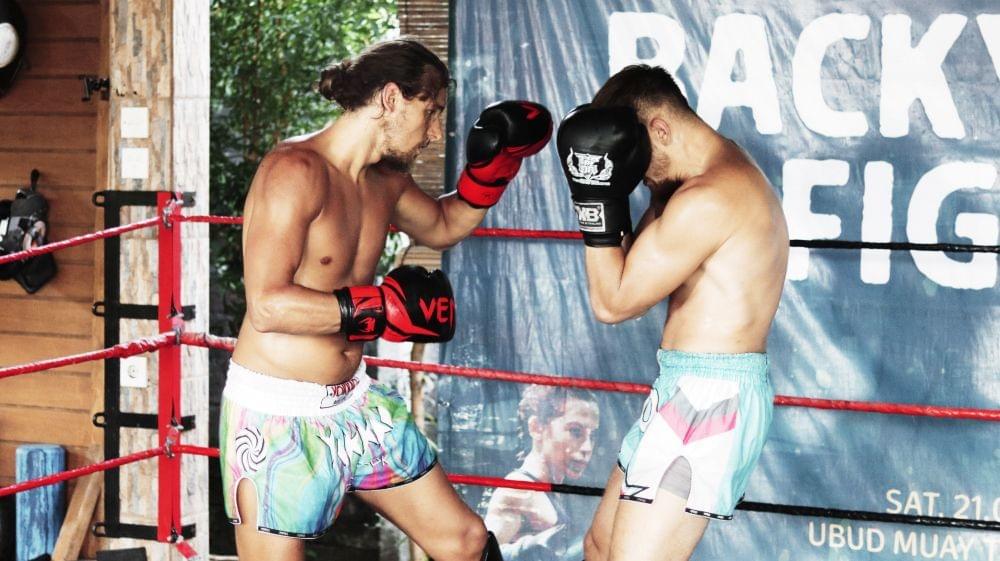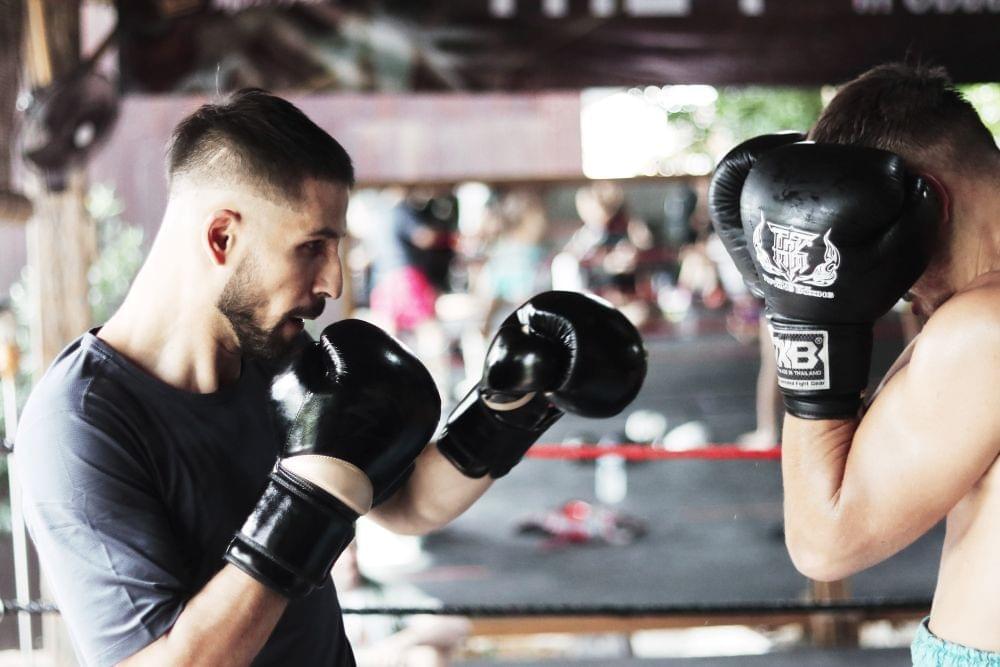If you've been hitting harder in the gym but still can’t deliver clean knockout shots in the ring, the missing link might be how you train strength. Power isn’t just about movement; it’s also about control, stability, and the ability to generate force from a static position. That’s where isometric strength training comes in.
Unlike traditional lifting or explosive drills, isometric training involves holding your muscles in a contracted position under tension, without moving. It sounds simple, but for fighters, it’s one of the most underused and misunderstood tools for building real knockout power.
In this article, we break down what isometric training is, why it matters for fighters, and which exercises will help you hit harder, stay more stable, and dominate under pressure.
What Is Isometric Training and Why It’s Ideal for Fighters

Isometric strength training involves contracting your muscles without changing the angle of your joints. Instead of moving weight through space (like in a bench press or squat), you hold a position and resist either your own body weight or an external force. Think of pushing against a wall as hard as you can, or holding the bottom of a squat for 30 seconds. No movement, but maximum effort.
For fighters, this type of training is ideal because it mimics real fight moments: holding your frame during a clinch, bracing your core before absorbing a body shot, or stabilizing yourself mid-strike.
It also builds strength at specific angles, perfect for striking posture, defensive positioning, and balance under fatigue. While dynamic training improves motion, isometric training builds the tension and control that makes every strike more explosive when it counts.
Benefits of Isometric Training for Combat Sports

Isometric training offers unique advantages that translate directly into fight performance. Here’s why every striker and grappler should be adding it to their weekly routine:
- Increases joint-specific strength: You can target exact angles, like the mid-range of a punch or the extended position of a kick, and strengthen the muscles used in those key ranges.
- Improves core and posture control: Holding tension without movement trains your deep stabilizers, which are essential for maintaining posture, rotating efficiently, and resisting takedowns or counters.
- Enhances explosive transfer of force: Isometrics activate high-threshold motor units, preparing your nervous system to fire more explosively once movement begins.
- Reduces injury risk: It builds connective tissue strength around joints and teaches your muscles to stay “on” under pressure.
- Mental toughness and endurance: Holding a max-tension position for 20–30 seconds builds focus and grit, which translates to late-round resilience in fights.
Best Isometric Exercises for Fighters
1. Isometric Push Against Wall (Punch Position Hold)
This drill simulates the moment of full extension in a punch, where impact is delivered and force must be transferred cleanly through the body. Holding this position under tension teaches your muscles and nervous system to generate and sustain maximal force in your strike range.
It also builds coordination between your core, shoulders, and hips, crucial for turning your body into a single force-delivering unit. This is especially effective for sharpening your lead hand, which plays a key role in range control, defense, and surprise knockouts.
How to do it:
- Stand in your natural fight stance about one foot from a wall.
- Place your lead hand flat against the wall at shoulder height, elbow slightly bent, like you're mid-punch.
- Push into the wall as hard as you can, activating your fist, forearm, shoulder, core, and glutes.
- Keep your back heel slightly raised and hips square to the wall to engage your full kinetic chain.
- Hold the push for 10–15 seconds, then rest 15 seconds. Repeat 3–5 times on each side.
2. Wall Sit with Guard Hold
Wall sits train lower body endurance and static strength, two qualities that keep you grounded and balanced during long rounds or high-pressure exchanges. Adding a guard hold increases postural discipline and strengthens the shoulders and upper back, exactly where most fighters begin to fatigue as the fight wears on.
This combination builds resilience and reinforces defensive structure under muscular stress, making you harder to break down physically and mentally.
How to do it:
- Stand with your back against a wall and slide down until your thighs are parallel to the ground (knees at 90°).
- Keep your heels flat and toes pointing forward, feet shoulder-width apart.
- Bring your fists to your face in guard position, keeping elbows tucked in close to your body.
- Keep your core engaged and your back flat against the wall the entire time.
- Hold for 30–60 seconds, rest for 30 seconds, and complete 3–4 rounds.
3. Plank with Fist Drive
This variation of the classic plank build isometric core strength while mimicking the act of pressing forward with your fists during a punch or clinch. The added fist drive activates your anterior chain, especially the chest, shoulders, and triceps, under static tension.
It also challenges your balance and mental focus, reinforcing full-body coordination when striking under fatigue.
How to do it:
- Begin in a forearm plank position with your elbows under your shoulders, feet hip-width apart.
- Form a straight line from your shoulders to your heels by engaging your core and glutes.
- Drive one clenched fist down into the ground as if trying to punch through it—without letting your body shift or collapse.
- Maintain the fist drive for 10 seconds, then switch sides. Continue alternating for 30–60 seconds.
- Rest 30 seconds and repeat for 3 rounds.
4. Isometric Lunge Hold (Strike Base Builder)
A solid base is key to throwing effective strikes and resisting takedowns or sweeps. The isometric lunge hold builds unilateral strength, hip control, and balance, all of which contribute to stability in both offensive and defensive movements.
This hold strengthens the legs and glutes in a way that mimics fight stances, and improves posture alignment for better kinetic transfer during punches, knees, or teeps.
How to do it:
- Step one leg forward into a deep lunge, front thigh parallel to the ground, back knee hovering just above the floor.
- Keep your torso upright, spine neutral, and fists in your guard position.
- Engage your glutes, quads, and hamstrings as you hold the position without moving.
- Hold for 20–30 seconds per leg. Rest 20–30 seconds. Repeat 3–4 rounds per leg.
5. Band-Resisted Strike Hold
This exercise improves strike-specific strength by forcing your muscles to resist elastic tension at the point of full extension. It sharpens your ability to control the end range of a punch, where most fighters lose stability, and helps build the shoulder and core endurance needed to maintain form during repeated strikes.
This drill also reinforces proper alignment and positioning, so that every punch you throw ends in a structurally solid frame.
How to do it:
- Attach a resistance band to a sturdy anchor at chest level.
- Loop the band around your wrist or glove and step back into your fighting stance, creating tension in the band.
- Extend into your jab or cross until your arm is fully locked out, simulate the final frame of a punch.
- Hold that extended strike position against the band’s resistance for 10–15 seconds.
- Reset and switch sides. Complete 3–4 holds per arm, resting 20 seconds between reps.
If you want your punches, kicks, or clinch control to hit harder and last longer, isometric strength training needs to be part of your routine. It builds the kind of deep, fight-specific tension that makes every movement faster, sharper, and more explosive.

While many fighters focus only on dynamic power drills, the fighters who dominate rounds and finish fights train to control force, not just generate it.
At Ubud Muay Thai, our coaches integrate isometric training directly into striking and conditioning programs to help athletes build smarter strength. With a mix of movement-based and tension-based drills, we help you stay powerful and composed in every round.

